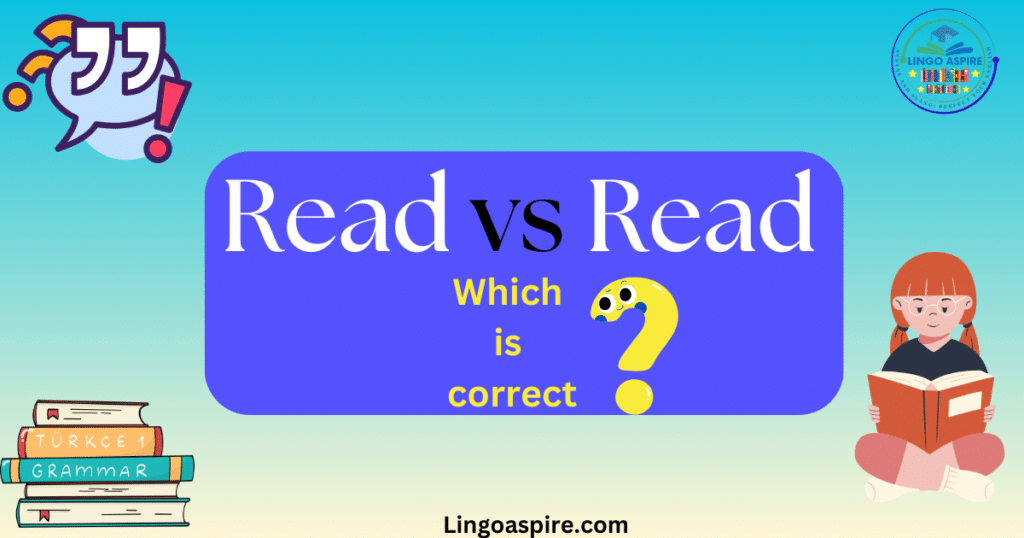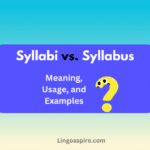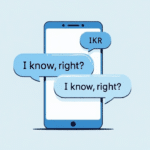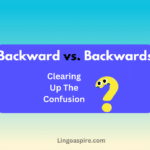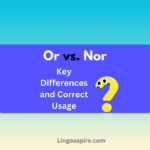The English language is filled with words that sound the same but have different meanings. Like Read vs Read in Past and Presnent Tenses. One such word is read. Although read looks identical in both its present and past tense forms, it’s pronounced differently in each case. If you’ve ever been confused by how to use this word correctly, you’re not alone. Many learners and native speakers alike find it tricky.
In this article, we’ll dive deep into the meaning of read, its use in different contexts, and why it’s spelled the same in both the present and past tense. We’ll also explore the difference between read and read, including helpful examples and tips for clear communication. With this comprehensive guide, you’ll finally be able to confidently use read in all its forms, whether you’re speaking, reading, or writing.
Understanding Read (Present Tense) vs Read (Past Tense)
In English, read is one of those words that has different meanings and pronunciations depending on whether it’s used in the present tense or the past tense. The present tense is used when you talk about something happening now or regularly, while the past tense refers to something that has already happened. But here’s where it gets tricky: both forms are spelled the same!
When you use read in the present tense, it rhymes with the word “seed”—reed. On the other hand, when you use read in the past tense, it rhymes with “bed”—red.
For example:
- Present tense: “I read books every day.” (pronounced reed)
- Past tense: “I read that book yesterday.” (pronounced red)
This small but important difference in pronunciation is what causes confusion for many people. So, the key takeaway here is that the meaning of read doesn’t change between the tenses, but the way you say it does. The pronunciation shifts, but the spelling stays the same.
Why Does Read Have the Same Spelling in Both Tenses?
One of the main reasons why read is so confusing is because it has the same spelling in both its present and past tense forms. Unlike many other verbs, where the past tense version ends in -ed (e.g., talked, walked), read does not follow the standard rule. This is because read is an irregular verb, which means it doesn’t follow the typical patterns of conjugation found in regular verbs.
You might be wondering: why does it have the same spelling if the pronunciation is different? To understand this, we need to look at the history of the English language. Over time, English has borrowed words from many different languages, and its conjugation rules have evolved. Some irregular verbs, like read, sing, and bring, have unique forms for their past tense. The spelling may stay the same, but the pronunciation changes.
This phenomenon isn’t just limited to read. There are many other irregular verbs that behave similarly, where the past tense is either pronounced differently or has an unusual form. A few examples include:
- Sing (present) – sang (past)
- Bring (present) – brought (past)
- Eat (present) – ate (past)
The tricky part of read lies in how the pronunciation changes, and this is what often causes learners of English to get confused. But once you recognize that the spelling is consistent and the context gives you clues, you can start to feel more comfortable with using read in both its forms.
How to Pronounce Read (Present Tense) vs Read (Past Tense)
Knowing how to pronounce read in both the present tense and past tense is essential for speaking English clearly. To help you out, here’s a breakdown of when to use each pronunciation:
When to pronounce “read” as “reed” (present tense)
The present tense pronunciation, reed, is used when the action is happening now or regularly. This is how you would say it when referring to an ongoing or habitual action. For example:
- “I read a new book every week.”
- “She reads the newspaper every morning.”
- “We always read before bed.”
When to pronounce “read” as “red” (past tense)
On the other hand, the red pronunciation is used when referring to something that has already happened. This is the past tense form. For example:
- “I read that article yesterday.”
- “They read the book last month.”
- “He read the email and replied.”
When you’re talking about the future tense, you don’t usually use read by itself. Instead, you would say something like:
- “I will read that book tomorrow.”
- “We are going to read a new chapter next week.”
Understanding these pronunciation rules can help you avoid confusion when speaking or writing in English. Read may look the same, but the way you say it gives away whether it’s present or past tense.
Common Mistakes to Avoid with Read (Present) vs Read (Past)
Now that we know how to pronounce read in its two tenses, let’s look at some common mistakes that many people make when using this word.
One common error is mispronouncing read in the past tense as reed instead of red. For example, saying “I reed that book yesterday” instead of “I read that book yesterday” can lead to confusion. The context in language is essential to determine which pronunciation to use, but sometimes it’s easy to forget about this detail, especially when you’re speaking quickly.
Another mistake that can happen is using the wrong tense in writing. Sometimes, people accidentally use the present tense when they should be using the past tense, or vice versa. For instance, if you’re talking about something that happened in the past, you need to say, “I read that article yesterday” (pronounced red). Saying “I read that article yesterday” would be incorrect because the action already happened.
To avoid these mistakes, pay attention to whether you’re talking about something happening now or in the past. The surrounding words in a sentence will help guide you. Context is everything.
Quick Tips for Mastering Read vs Read
Mastering the difference between read in the present tense and past tense can be a challenge, but with a little practice, it becomes second nature. Here are a few tips to help you:
- Listen to context. In a sentence, context can help you determine whether read is being used in the present or past tense. Pay attention to time markers like yesterday, last week, or every day, which will tell you whether it’s past or present.
- Focus on pronunciation. Knowing how to pronounce read correctly will help you distinguish between the two tenses. If it sounds like reed, it’s the present tense. If it sounds like red, it’s the past tense.
- Practice with examples. Try making your own sentences using read in both tenses. For example, say:
- “I read a new book every month.” (present)
- “I read that book last year.” (past)
- Use a memory trick. To remember the difference, associate reed with reading now and red with something that has already happened.
- Think about the action. Is the action ongoing or something you do regularly? That’s a clue to use the reed pronunciation. If the action is completed, use red.
Examples of Read in Sentences
To make sure you’re using read correctly in your sentences, let’s take a closer look at some more examples. These will help you understand how read works in both the present tense and past tense.
- Present Tense:
“She reads a lot of novels about history.”
“I always read before going to bed.”
“They read news articles on their phones every day.”
“He reads the instructions carefully before starting.” - Past Tense:
“He read the book last week.”
“I read the letter this morning.”
“We read about the new movie yesterday.”
“They read the article a few hours ago.”
As you can see, read is used frequently in both the present tense and past tense. Understanding how to use read correctly in these sentences will help you improve both your reading and writing skills.
Conclusion: Mastering the Difference Between Read and Read
In conclusion, mastering the difference between read in the present tense (pronounced reed) and past tense (pronounced red) is crucial for effective communication in English. This irregular verb can be confusing, but once you understand the context and pronunciation rules, it becomes much easier to use.
The key to using read correctly is paying attention to context and pronunciation. The more you practice, the more natural it will feel. Remember that read may look the same, but it can mean different things depending on when the action occurs. With these simple tips and plenty of practice, you’ll be able to confidently use read in all its forms—present, past, and future.
Whether you’re learning to read, reading books for fun, or writing an essay, you now have the tools to understand and master this common, yet tricky, word. Keep practicing, and you’ll soon be a pro at using read in all the right ways!.
Souces
- Writing Explained: This article delves into the nuances of “read” as an irregular verb, highlighting its present and past tense forms, pronunciation differences, and usage in sentences.
- Writing Tips: This resource offers a comprehensive overview of “read,” discussing its definitions, pronunciation in different tenses, and providing example sentences to illustrate its usage.
- ProWritingAid: This guide explains the pronunciation differences between “read” in its present and past tense forms, along with example sentences to demonstrate correct usage.

